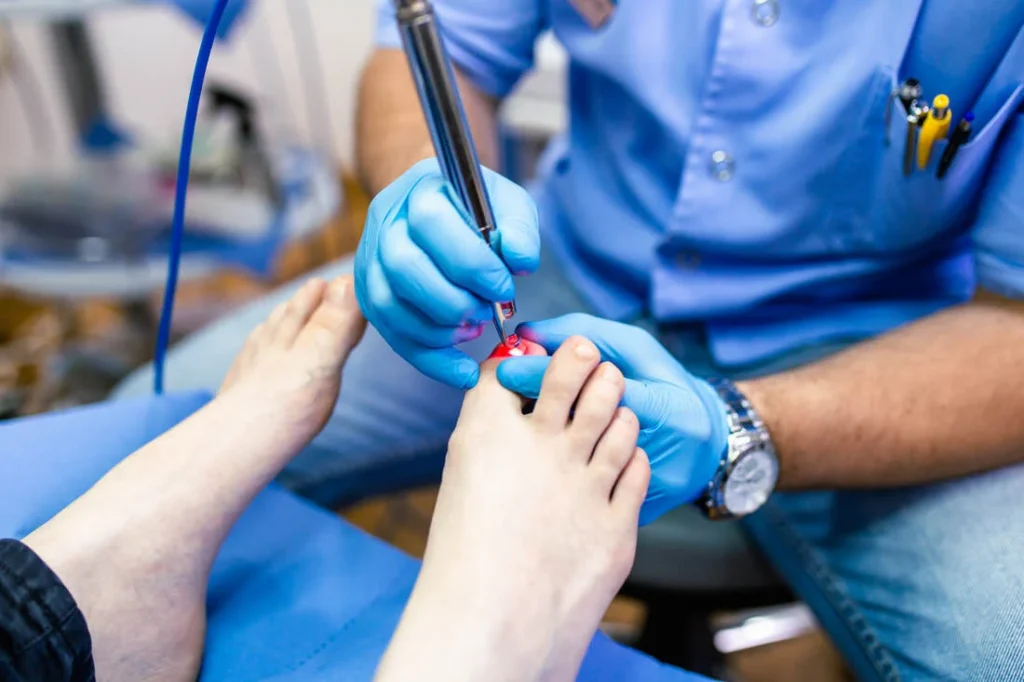Toenail Fungus

Toenail Fungus Specialist
Toenail Fungus Q & A
The main reason nails become discolored and thick is nail fungus. Nail fungus thrives in warm, dark, and moist environments, which describes the inside of a shoe. Keeping the feet cool, dry, and open to air and light is the way to prevent nail fungus from proliferating. Wearing moisture-wicking or wool socks will prevent moisture build-up in your feet. Cotton, though it is a natural fabric, is not recommended as it holds moisture close to your skin, especially in the enclosed environment your shoe creates. If you work out, removing your shoes and wearing open-toed shoes immediately after your workout will also reduce moisture build-up. There are over-the-counter products which you can use to combat athlete's foot and disinfect your shoes as well as ultraviolet shoe trees which kill fungus in your shoes. The bottom line with respect to foot hygiene for athlete's foot and nail fungus is to keep the feet as cool and dry as possible.
Once fungus infects under your nails it becomes much more difficult to treat. There are two effective treatments on the market today, oral anti-fungal medication and laser therapy. Most patients opt to treat with the laser, as it does not pose the same risks that oral medications present to the liver. Topical treatments, though much improved, are still not effective enough to be used as a primary treatment.
For more information on how to treat your specific case of athletes foot and nail fungus, please make an appointment for an evaluation.
Dr. Co's office uses the Pinpointe laser, the first FDA-approved laser for treatment of nail fungus. The Pinpointe laser uses heat to desiccate fungal spores, effectively killing fungal cells instantaneously. My protocol involves 3 separate treatments to all affected nails, each separated by 2 months. At each treatment the nails are debrided to remove as much fungal debris as possible, then laser treatment performed to all affected nails. Each visit takes about 10-15 minutes.
The laser is not initially hot, but when the nail absorbs the laser heat, it will feel like a match is over your toe. The heat dissipates quickly once the laser is removed. There are no limitations after a laser treatment and you can return to all your activities without limitation.
Nails grow at a snail's pace, at about 1 millimeter per month. It takes 9 months to a year for a nail to fully replace itself. You will see clearing at the base of the nail which will continue to push out month after month. After the initial laser treatment is done it will take approximately 9 to 12 months to see full effectiveness. Even after the first year though, the nails may continue to improve if proper hygiene is adhered to
Conversely, nail fungus can return if the nail is not adherent to the nail bed or if the feet are constantly subjected to a warm, dark, and moist environment. There are a variety of recommendations to safeguard your laser treatment, such as alternating your shoes, wearing moisture-wicking socks, keeping your nails trimmed short, use of antifungals, and such.
Dr. Co makes it a point to continue to follow up with his Pinpointe laser patients to make sure they get the best results possible.
Insurance Providers


